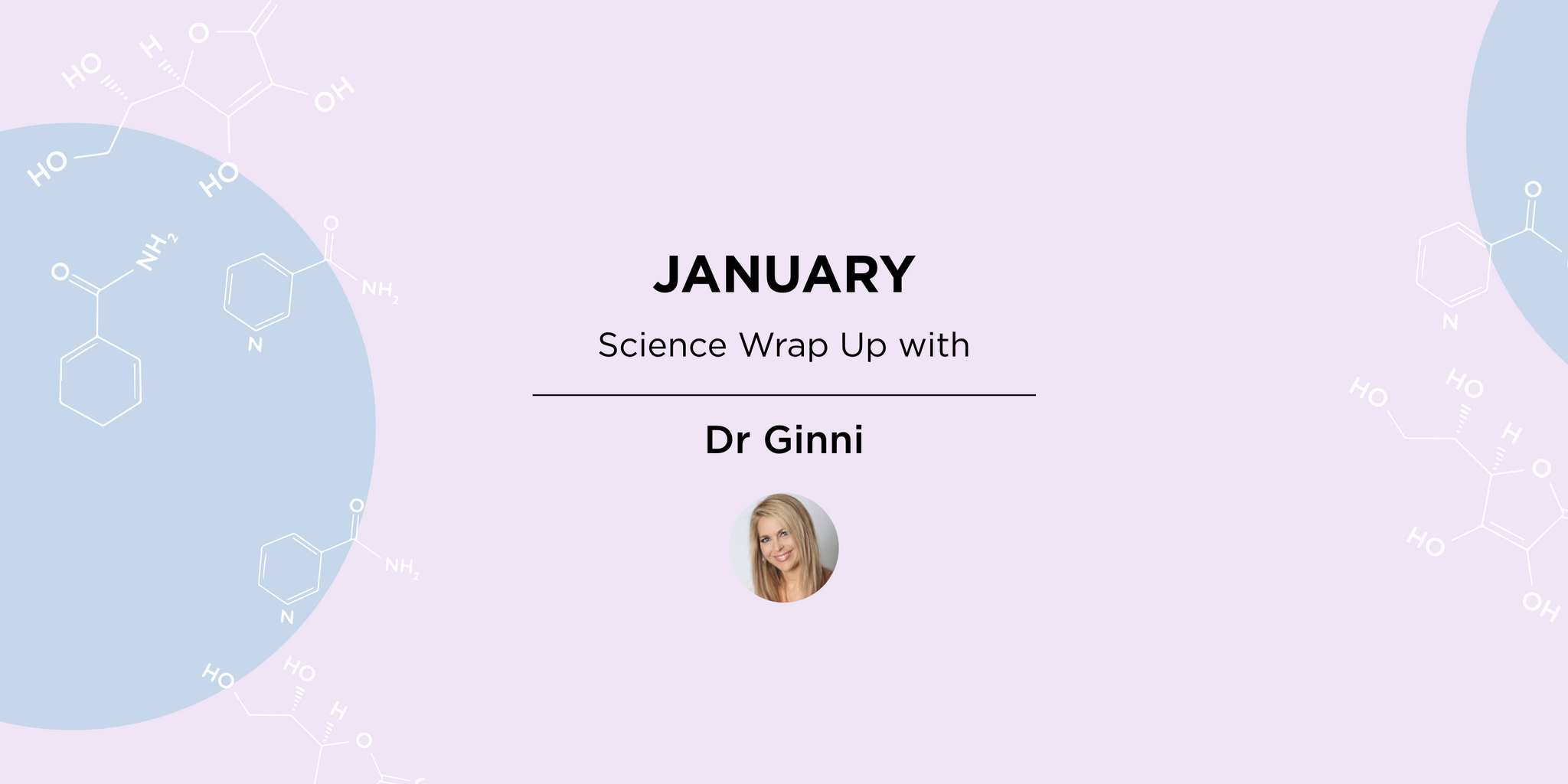
Science Hub
Science Wrap Up January 23
25 January 2023
Ginni Mansberg
Happy new year! Who is excited about 2023? Meeeeeee!
After a refreshing break in which I met COVID for the first time, I’m excited to be limbering up for another exciting year of innovations and brighter skin.
I’m preparing to present at the inaugural Menopause in Aesthetics conference in London in February. And hopefully you have seen our new Teen Acne eBook which dropped mid-January. Casey, Tess and Jade were receiving so many questions from concerned parents that we decided to collate all of our best tips and tricks in one place. Any other eBooks you want?
Reach out and let us know! We’re here to help!!
Meanwhile, here is a quick overview of the latest studies to catch my eye;
Achieving treatment success in rosacea takes time.
We at ESK are obsessed with rosacea. It’s a condition that affects 10% of Caucasians (including me!) We are all about skincare to support rosacea skin.
For mild cases, this is often enough. But for more severe cases, or during flare ups, medications might be needed.
So how long should active treatment continue?
I was happy to see a great editorial written by dermatologists from Germany, US and Canada in the Journal of Clinical and Aesthetic Dermatology on the topic of medications.
The answer; A year! That’s right. That’s what is needed to prevent a relapse and increase the chances of a complete clearance.
Once your skin is as good as it’s going to get, then the active prescribed treatment can be slowly tapered down and then ramped up again if signs or symptoms worsen. Skincare? Just keep it going! It will help calm your irritated skin.
Oh and don’t forget to protect yourself from the sun every single day to prevent flare ups.
Blue light device warnings
If you have spent thousands on a blue light device for acne, I have bad news for you. A new review of studies published in the Journal Skin Pharmacology and Physiology, shows they’re a dud investment.
The findings?
Blue light devices were pro-ageing, caused hyperpigmentation as well as the generation of reactive oxygen and nitrogen species. These reactive oxygen and nitrogen species cause DNA damage (which are at the heart of the accelerated ageing) and alter the immune responses in the skin. Not to mention the fact that blue light caused disruption of circadian rhythms.
Given that we have great treatments for acne, why would you bother?
Tranexamic Acid for pigmentation
I use tranexamic acid for my patients with heavy periods. That’s because it works by blocking your body from breaking down blood clots, and as a result, it prevents bleeding.
But it also prevents the binding of a chemical called plasminogen to skin cells and that, in turn reduces the activity of tyrosinase in your melanocytes- or pigment producing cells.
A systematic review of 4 studies was published in the journal, Clinical Cosmetic Investigative Dermatology. The authors found that injecting tranexamic acid directly into pigmented skin is the most effective way to use this medication. You can take it as a tablet too, but it has side effects, potentially including inducing your body to have more blood clots.
The authors did find that putting tranexamic acid on the skin can work, too. But the studies were tiny, and in one, tranexamic acid was combined with niacinamide and kojic acid. In both studies the tranexamic acid caused redness, itch and stinging, albeit temporarily. You’d get that compounded from a script from a dermatologist.

